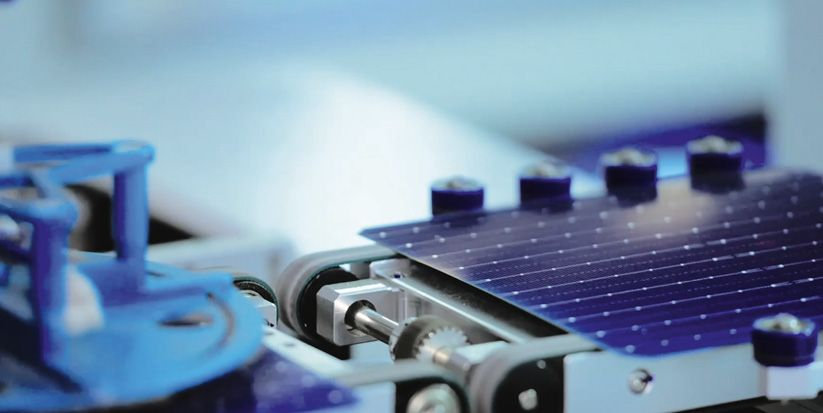Technological innovation continues apace, in a solar industry that could add 400 GW of generation capacity in 2023. This year could be as pivotal as 2016, when passivated emitter rear ccontact (PERC) solar cells supplanted back surface field technology. TOPCon solar cells are the front runner to become the new mainstream solar approach and are gaining on PERC market share. However, heterojunction (HJT) and back-contact cells are also rising in popularity.
Looking back
In 2016, after PERC had already made significant inroads, researchers and test labs became aware of degradation issues. They saw that the technology was particularly susceptible to: light-induced degradation (LID) and light and elevated-temperature induced degradation (LeTID).
Once the root cause was identified, cell and module manufacturers quickly adopted mitigation methods in their production processes, ensuring PERC cells should not suffer excessive LID and LeTID rates.
In mid-2023, researchers and testing and certification laboratory specialists began warning TOPCon modules might be more sensitive to certain degradation mechanisms. The question is whether the issues flagged are indicative of inherent problems of TOPCon technology or are a result of the materials or process production parameters of these early modules not having been fully adapted to the specific needs of the technology.
Degradation observation
The alarm was first raised by Paul M. Sommeling and his collaborators from Nederlandse Organisatie voor Toegepast Natuurwetenschappelijk Onderzoek (TNO). The team from the Dutch research body conducted damp heat tests to study the moisture-induced degradation impact of different encapsulation materials on performance in bifacial PV modules. It found that the front-side metallization of negatively doped, “n-type” TOPCon cells appeared to be more prone to acid- or moisture-induced degradation than positively doped, “p-type” equivalents.
The latest annual “PV Module Index report,” published in May by the Renewable Energy Test Center, a third-party testing lab, indicated that n-type TOPCon cells may have higher susceptibility to ultraviolet-induced degradation (UVID).
In June, Asier Ukar, director of testing body PI Berlin Spain, voiced concerns that manufacturers were not fully aware of different degradation mechanisms when switching from PERC to TOPCon cell production.
pv magazine has approached scientists and certification specialists at top institutes to ask them about TOPCon degradation issues. Manufacturers have also outlined the mitigation steps they’re taking.
Main sources
In this first part of a two-part series, we aim to consider any valid concerns for TOPCon manufacturers.
Addressing these aspects will require the industry to implement appropriate measures in order to mitigate the detrimental effects that higher degradation sensitivity may entail. It is obvious that TOPCon modules should not exhibit higher degradation levels than today’s market leading PERC modules show over a 30-year lifespan under actual operating conditions – sometimes in rather demanding environmental conditions.
Any inherent higher-sensitivity associated with the transition from PERC to TOPCon technology should be clearly distinguished from any “teething pains” in newly released TOPCon modules that have been installed over the past 18 months. The term “teething pains” would characterize quality issues that arise when new technologies are introduced to the market in “version 1.0” or perhaps even in a “version 0.9.” Such problems do not necessarily reflect a TOPCon-specific issue but rather highlight the fact that certain processes or materials, for instance the encapsulants, have yet to be fully optimized and fine-tuned to the specific needs of TOPCon cell technology.
Technology issues with new products are not unique to the solar industry. Some manufacturers may simply be a little overly ambitious to bring a product to market, most likely at a time when the full qualification and optimization steps of all relevant process parameters in production have not been fully completed. Such an approach effectively makes customers “beta testers” of the newly released products. While this might be a viable development option for software, we consider it detrimental for photovoltaic products. After all, a “bug fix” for solar modules typically cannot be implemented by downloading a newer version, as is customary for software products. If there is a real issue then, more often than not, the modules already installed in the field will have to be exchanged, which is very costly and time intensive.
As always, a good reputation is easily tarnished. It is time-consuming and cumbersome to have to try to restore lost trust. It is hard to explain to customers that the “teething troubles” currently being observed with some TOPCon suppliers are not problems inherent in the technology but due to a lack of preparedness on the part of some manufacturers.
Just as a cook cannot prepare a three-star meal at their first or second attempt solely because they’ve chosen the best ingredients, it appears logical that it is impossible to launch a new cell type onto market that meets all quality requirements without passing through a certain learning curve. Noting here, of course, that the required lifespan is 30 years and more.
The necessary optimization routine equates to tweaking some process parameters and identifying viable process windows. Such fine-tuning can really only be achieved within a framework of trial and error even if the manufacturer has years of experience in PERC production and was fortunate enough to have selected the correct bill of materials (BoM) from the outset – which is an art in itself.
The PV industry continues to be under tremendous price and cost pressure so manufacturers always have to weigh how they put together the BoM for their modules; simply opting to always take the best components available is not economically viable. In fact, very careful consideration must be given to any decision-making process in which high-quality “ingredients” are deemed absolutely indispensable to create modules that will fulfil performance expectations over 30, 40, or even 50 years. It is necessary to identify the points at which low cost solutions may be sufficient without jeopardizing this goal.
In terms of the research conducted by TNO in the Netherlands into sensitivity to certain types of degradation in TOPCon cells, the researchers’ warnings center on three areas:
1. Are TOPCon modules more sensitive to water vapor than PERC panels?
We know that some manufacturers have indeed taken extra precautions with respect to this degradation mechanism, stating that they attribute this higher sensitivity to the corrosion of the finely-porous glass that is the “glass-frit” in modules. The corrosion reportedly occurs due to chemical reactions between moisture/acetic acid and the silver-aluminum paste and glass frit.
Christos Monokroussos, from the testing lab TÜV Rheinland Shanghai, disagrees. “The sensitivity of PV modules to water vapor ingress is predominately controlled by their encapsulation, and to a much lesser degree by the cell technology,” he says. “We do not expect TOPCon modules to behave drastically different from conventional PV modules when it comes to water vapor ingress.”
As a takeaway, one can conclude that the chemical reaction that ultimately leads to corrosion, and thus degradation, is already well known. So one would therefore assume that manufacturers have taken this aspect into account from the onset and have dealt with it through the proper choice of encapsulant.
2. Are TOPCon modules more prone to UV degradation?
To this question, Monokroussos says, “Yes, TOPCon technologies exhibit an increased sensitivity to UV radiation. The degradation is attributed to [issues with] surface passivation, which deteriorates after being exposed to UV light. TÜV Rheinland is, therefore, designing an internal standard to address UV-induced degradation of TOPCon PV modules. During this test, both faces of a PV module are exposed to an increased UV dose (10 times more than received in IEC 61215 and IEC 61730 [standard testing conditions]), which are considered sufficient to assess the susceptibility to UV-induced degradation.”
Monokroussos concludes that manufacturers must therefore pay special attention to the correct choice of encapsulant. “Both the front glass and the encapsulant serve as a UV filter for the solar cells,” he says. “But since TOPCon cells are inherently more sensitive to UV degradation, and the UV filtering capabilities of the encapsulant decreases over time as the module is permanently being exposed to UV radiation, a more UV resistant encapsulant has to be chosen and, typically, a thicker layer of encapsulant is being considered.”
3. PI Berlin's Ukar says that TOPCon modules are more sensitive to potential-induced degradation polarization (PID-p). Is this view shared by other experts?
“Yes, n-type technologies, in general, are more prone to PID-polarization,” confirms Monokroussos. “The degradation mode is generally seen as reversible in the field as long as the module’s back side is exposed to UV light. Generally speaking, in most application environments, PV modules would receive some UV light from the back in the field yet there may be other application scenarios eg. roof-mounted installations, where the rear side does not receive sufficient UV irradiation, thus making these modules more susceptible to severe power losses arising from PID-p. Currently, the IEC [International Electrotechnical Commission] working group 2, which is the standardization group focusing on PV, is working on a procedure which would allow to identify the sensitivity of PV modules to PID-p.”
To summarize the three areas of concern, in all cases there are technological reasons why manufacturers should pay extra attention to these degradation paths. At the same time, there are also solutions available today that don’t entail the significant extra cost to contain these issues.
If there are batches of TOPCon modules installed in the field that now exhibit problems, it is much more indicative of a manufacturer releasing their product prematurely than a sign of an overall problem associated with TOPCon technology.
It might be tempting to take a gloomy outlook and wonder how long it will take until all TOPCon manufacturers have eventually adjusted their BoMs and production processes to accommodate these existing degradation threats. However, we received one piece of feedback from the research community that we believe much better summarizes the outlook for the PV industry as it stands on the brink of transitioning from p-type wafers to n-type wafers.
Radovan Kopecek, from International Solar Energy Research Center Konstanz, points out that while higher-efficiency cells can be susceptible to all forms of degradation, n-type has inherent advantages.
“N-type material is less sensitive to impurities and therefore degrades less in the field – if you understand what you are doing in the process,” says Kopecek. “If you have the process under control and choose a good BoM (for instance, double glass and POE [polyolefin elastomer encapsulant]), new n-type module technologies will be more stable.
“Unfortunately, when technology changes occur too quickly, products can be introduced to the market too quickly,” Kopecek adds. “The price pressure in the industry is enormous and currently the overcapacities created by the rapid expansions [of production fabs] is not very helpful. The industry must learn to play a global PV symphony and focus less on solo virtuosity.”
In the second installment of this series, we will compare and highlight the different approaches being taken by the leading TOPCon manufacturers to address these challenges.
This content is protected by copyright and may not be reused. If you want to cooperate with us and would like to reuse some of our content, please contact: editors@pv-magazine.com.



1 comment
By submitting this form you agree to pv magazine using your data for the purposes of publishing your comment.
Your personal data will only be disclosed or otherwise transmitted to third parties for the purposes of spam filtering or if this is necessary for technical maintenance of the website. Any other transfer to third parties will not take place unless this is justified on the basis of applicable data protection regulations or if pv magazine is legally obliged to do so.
You may revoke this consent at any time with effect for the future, in which case your personal data will be deleted immediately. Otherwise, your data will be deleted if pv magazine has processed your request or the purpose of data storage is fulfilled.
Further information on data privacy can be found in our Data Protection Policy.